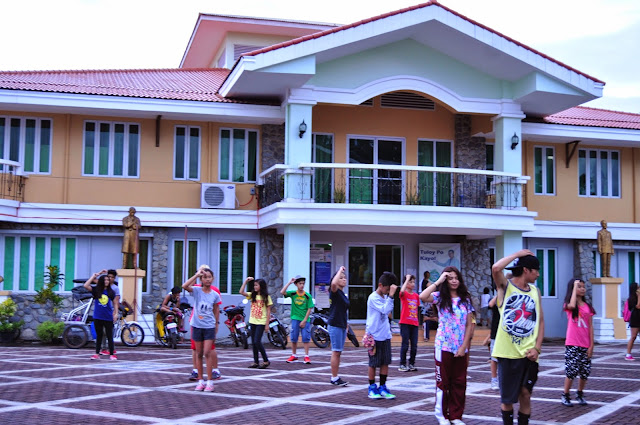Baler: Around Town
BALER is one of the oldest towns in the Philippines having marked its 400th year in August of 2011. Because of this, its culture is enriched by history and heritage as seen in its streets and structures, and as spoken by its people.
Yet the capitol town of Aurora province is also teeming with adventures. Nestled in the Caraballo Range of the Sierra Madre Mountains and outlined by the Pacific Ocean in east, Baler is home to Sabang Beach, which is famous for surfing, as well as a number of other natural wonders--making it a promising hub for eco-tourism.
As a first-timer in this new land, I could say that all my cravings for culture and adventure were satisfied in a span of three days--with many more places left to see and experience.
In this story, join me as I followed Baler's historical trail starting from Kilometer Zero.
 |
| Baler Church where the historic Siege of Baler took place |
Besides being the town's symbol of Catholicism and faith, the church is also a historical place as it is where Spanish soldiers last stood against the Filipino revolution from 1898 to 1899.
Quoting its historical marker: "A Spanish garrison of four officers and fifty men was besieged in this church by Filipino insurgents from June 2, 1898 to June 27, 1899. . . The garrison learned for the first time that the Philippines had been lost to Spain and that for many months, there had been no Spanish flag in Luzon, except the one waving over Baler Church."
 |
| A reproduction of the signatures of the Spanish soldiers who survived the Siege of Baler. The original is displayed in a museum in Spain. |
After Baler Church, a visitor/tourist/wanderer then follows the trail (quite literal because there are actually footsteps imprinted at the the streets) to the residence of Doña Aurora Quezon, wife of Philippine Commonwealth President and Father of Filipino Language Manuel Quezon. Both hails from the town and lived very near from each other. (The provinces of Quezon and Aurora were named after the president and first lady, respectively.)
 |
| The residence of Dona Aurora, the wife of President Manuel Roxas |
Moving on, next stop is the town's Municipal Plaza. The current location of the plaza is where survivors of the December 27, 1735 tsunami rebuilt the new town hall, as well as the church. Only a few families survived by climbing up Ermita Hill, considered as one of the highest peaks of Baler.
 |
| I bet the monuments of Jose Rizal and President Manuel Quezon are enjoying this youthful scenery |
Also at the plaza is the "Baler 400 Years" commemorative monument by Filipino installation artist Junyee. It features four pillars interconnected by 100 horizontal lines to represent the town's four centuries of history. Again, it was commissioned by former Sen. Angara.
 |
| Museo de Baler was built at the site where Commonwealth President Manuel Quezon was born |
The museum is built only in 2003 again through the efforts of the Angaras. Large and old trees surround the museum, and in the middle, sits a very majestic sculpture of President Quezon.
The museum features a traditional structure covered in red bricks and bronze bas-reliefs depicting historical moments of the Philippines.
Inside, a collection of town artifacts are found, as well as contemporary collections in partnership with other institutions like the Instituto Cervantes Manila.
Beyond the historical trail, there is also so much more to see in downtown Baler. Here are the sights I spotted and shot:
 |
| Balerianos are devout of the Nazareno too; The defunct Bank of Baler spotted |
 |
| (Clockwise from top left) The old Georgina Cinema, the town market, an old establishment and a printing press |
Baler in numbers:
9,255 hectares: land area;
about 39,109: population;
3rd class: municipality;232 kilometers away from Manila with
4 to 8 estimated travel time.
(TEXT AND PHOTOS ©EUDENVALDEZ)
RELATED STORY:
Baler: Beyond Sabang




 Euden Valdez
Euden Valdez





No comments: